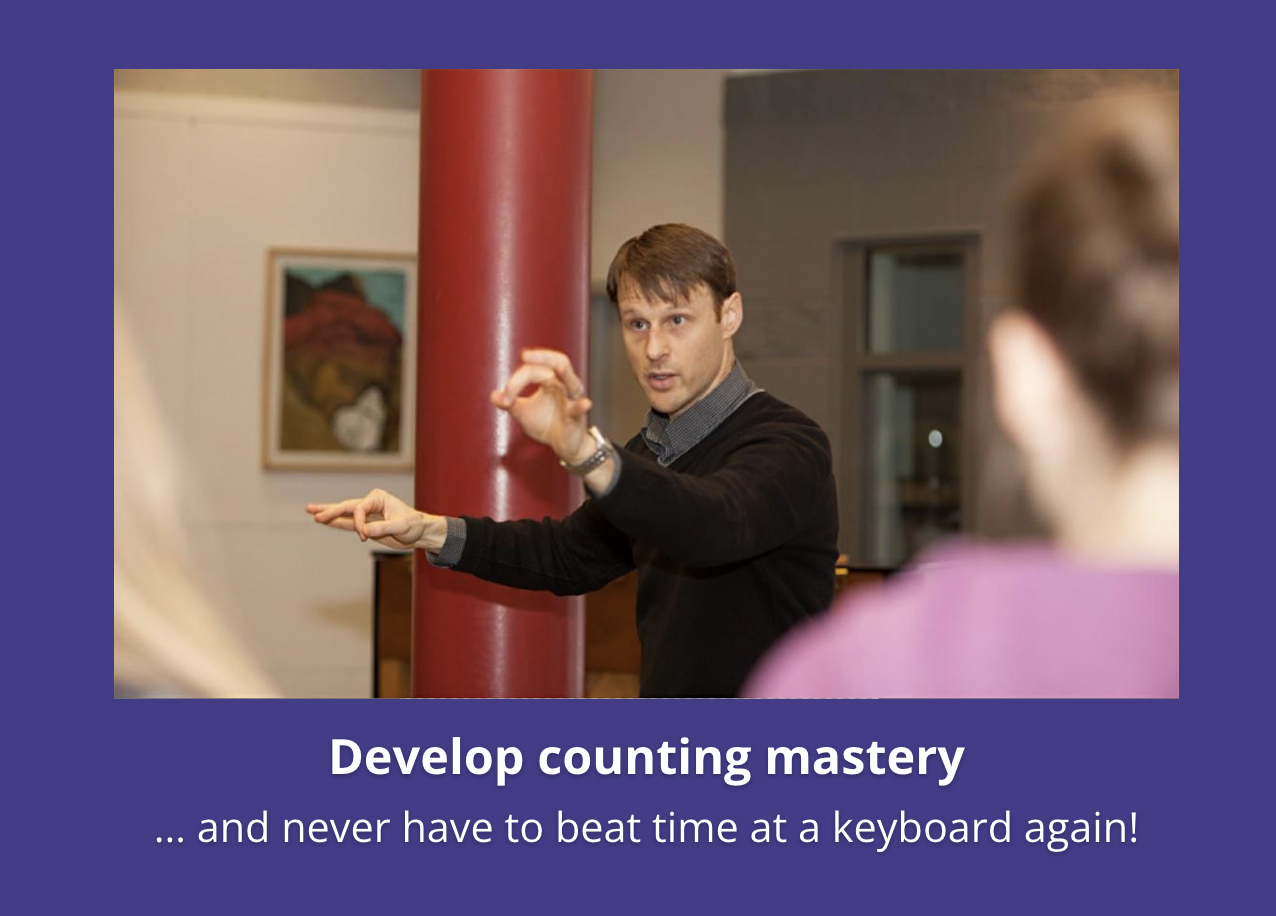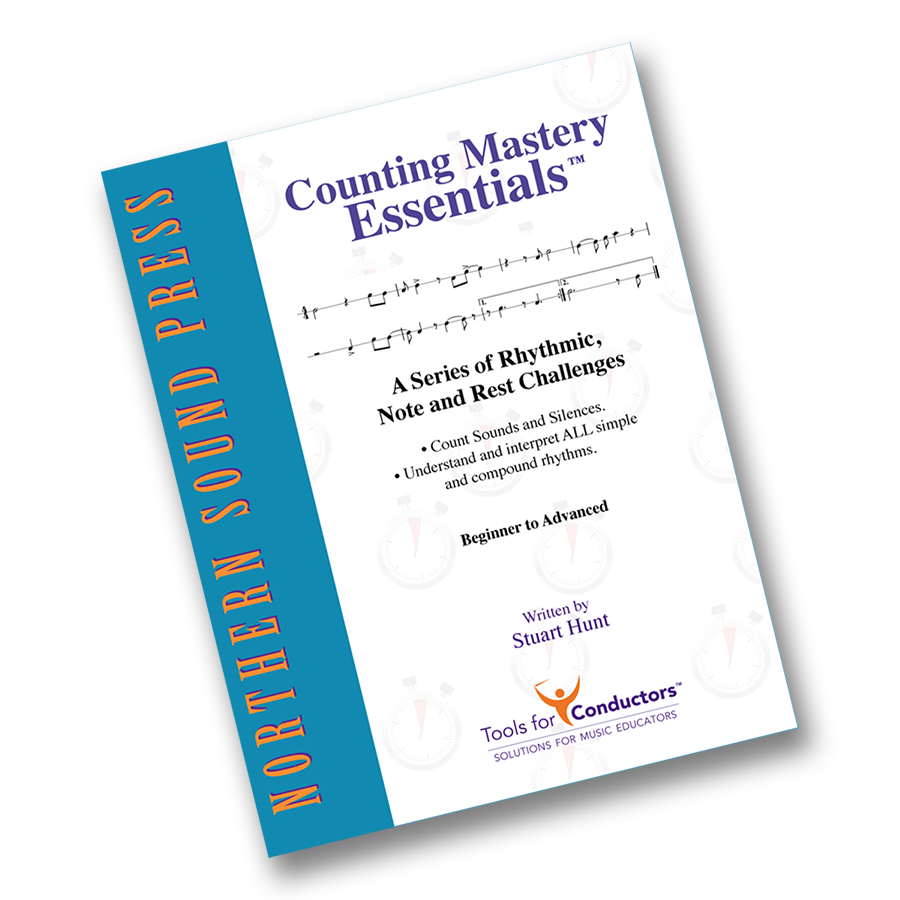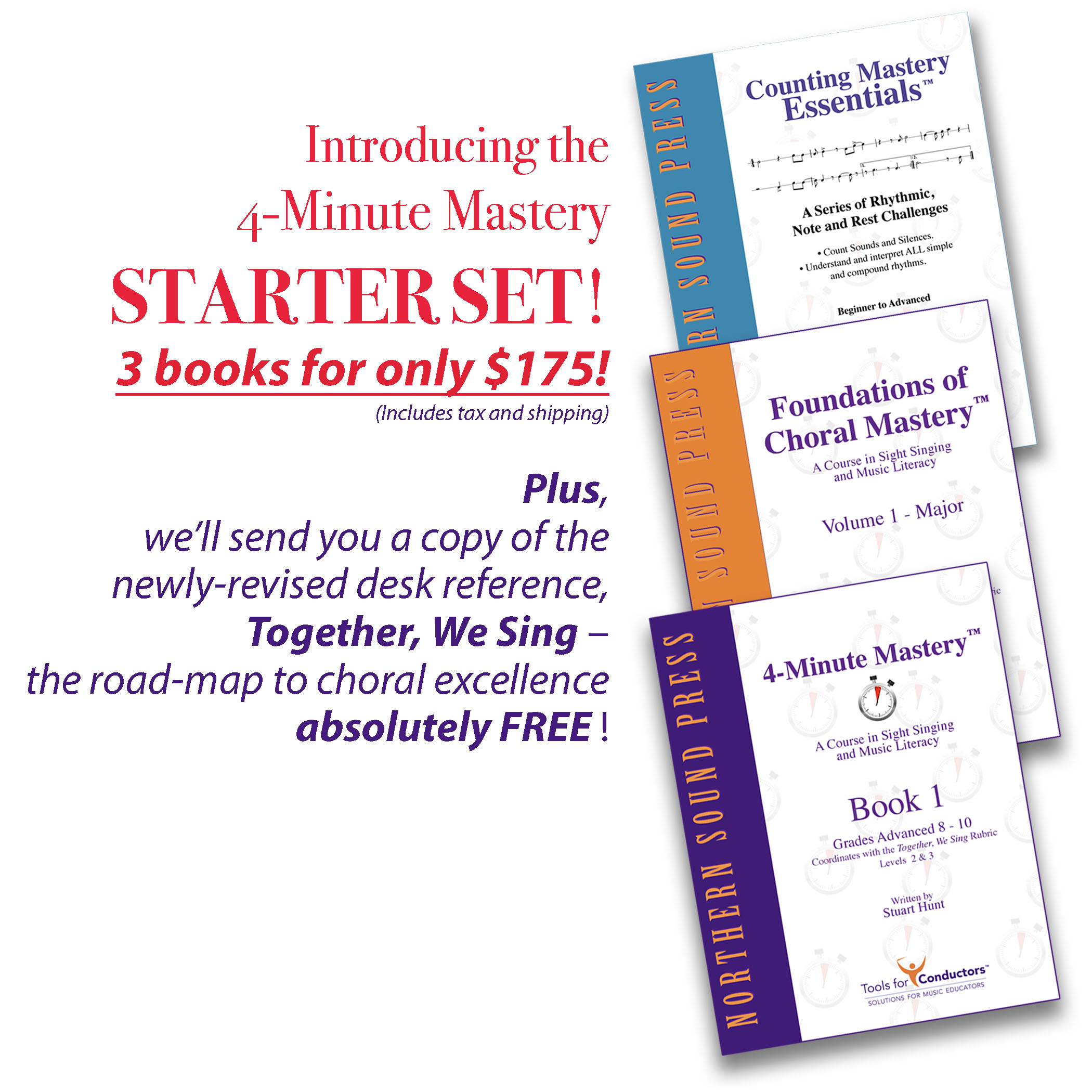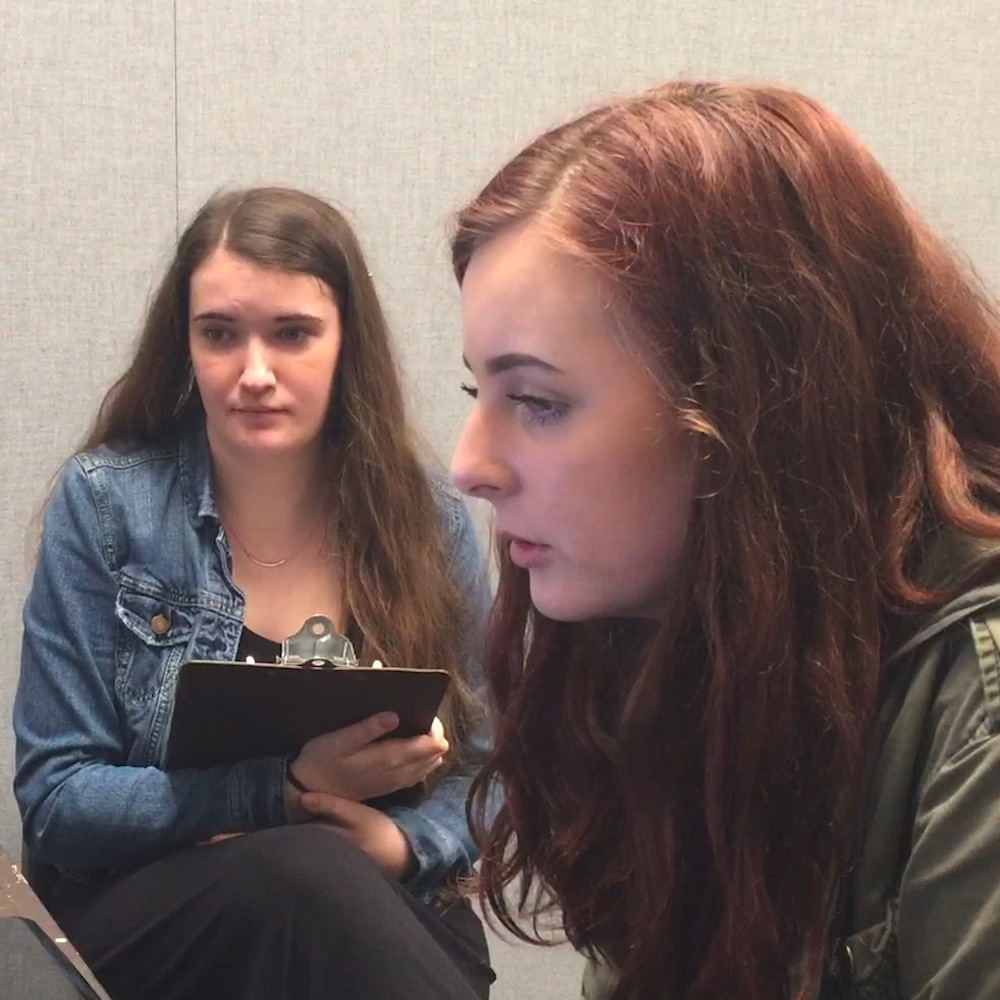The Primacy of Rhythm
Practical Understandings of this First Musical Skill
by Stuart Hunt
“Rhythm is the art of beautiful movement”
-Augustine of Hippo
Putting the horse in front of the cart when discussing rhythm, let’s take a moment to examine the “why” of rhythm, followed by the “how to… both teach and learn. The “why” can guide our path to excellence and the joy of performance.
As conductors, we know that counting and rhythm, at its core, is just math. But, as humans, we actually experience and learn pulse before we are born…in vitro. Mom’s heartbeat is always present…a life-giving metronome. At a certain point, we then also become aware of our own, metric pulse. The word “rhythm” is derived from the Greek rhythmos, meaning “measured flow, movement or motion” 1. Plato’s definition was “Rhythm is order in movement.”2 Barred / metric rhythm, it is worth noting, only began to appear in the 17th century as a result of the need of dancers to know where a “downbeat” was. As choral writing with more parts and greater complexity after circa 1600, there was obvious need for more precise notation to “hold things together.”
Considering rhythm in the singing and choral art, rhythm exists in the form of groups or patterns: small, medium, and large. It is true that rhythm can exist without melody (percussion), but melody can not exist without rhythm. In order for singers (alone or in groups) to interpret text, melody, tension/release, artistic expression, and other aspects of vocal communication, we eventually choose how we “group” rhythmic patterns. The challenge for choristers (and conductors) is that we must agree how to group & interpret.
The easiest and least time-consuming method to accomplish this is to be able to independently “count” rhythm. However, this is often over-thought, over-worked and does not actually produce the intrinsic accuracy and motivation we hope for.
Addressing and solving this challenge, one of the most influential choral conductors of the 20th century, Dr. Robert Shaw’s promotion of “count-singing” gave both substance and form to rhythmic precision by teaching that “count-singing is a procedure that teaches pitches and rhythms simultaneously and trains the singers to share a common pulse.”3 Count-singing works, Shaw insists, because4
- It removes all doubt when sounds should begin and end
- It clarifies exactly which pitches should be sung and how long they should be sustained
- It ensures vertical alignment for all voice parts, regardless of the pitch or duration of the individual notes in each part
- Because it clarifies vertical alignment, it reveals harmonic progressions and facilitates clarity in polyphonic passages
- It offers a means by which crescendo and diminuendo may be paced over time
- Choirs will find it easier to control the placement of final consonants and the pronunciation of diphthongs
Agreement on terms

Perhaps we’d better state the obvious:
- Tempo is the speed at which music “moves”
- Rhythm is sound placed in time, in an organized pattern
As applied to poetry, speech, or music, rhythm (and expression) give interpretation and understanding to words and text. How we stress or do not stress syllables can completely change understanding or meaning. Consider:
Are you going to choir?
Are you going to choir?
Are you going to choir?
Are you going to choir?
Are you going to choir?
Likewise, rhythmic interpretation can and does affect the way we “feel” about musical phrases, whether or not text is present. Two excellent examples of rhythmic variation and mood influence are Karl Orff’s “Carmina Burana” and Bedrich Smetana’s “The Moldau”….both evocative of the theme for which they were written.



Learning to learn
It is worth considering that our instrumental colleagues and their approach. Instrumentalists make constant use of “concept repetition”, or, drill, which involves:
- Quickly and correctly identifying and counting notes
- Grouping them into rhythmic patterns
- Interpreting the patterns into musical phrases
They do, in fact, drill patterns of many types, which leads to improved abilities to “see” larger amounts of notes, quickly recognized and group them into recognized patterns, and play artistically with decreasing amounts of rehearsal time…what we all wish to do.
How is this trained?

Consider how we all learned to read in the first place:
- We learned the sounds of letters (note identification)
- We combined them to make words and rhythmic patterns
- We linked words to make phrases & sentences (musical phrases)
What is often overlooked or missing in choral education is rhythmic pedagogy. We teach rhythmic identification but do not train the EYES to look ahead and combine notes into phrases. To save rehearsal time and detail more advanced music, we must train our vocal students to:
- Look ahead
- Look for / identify patterns (not just notes)
- See an entire measure, instead of individual notes
As professionals, we do that, but our students do not yet have that depth of experience.
Gary Corcoran wrote in “The Addition System for Teaching and Learning Rhythm”:
“Achieving an automatic response to reading rhythmic patterns….is the result of much necessary drill and repetition. It is impossible to develop a reflexive and accurate response to rhythm patterns without drill (emphasis SH).”5 FREE download of Dr. Corchoran’s ENTIRE BOOK !
The Keys
As noted in points 1, 2, and 3 above, Dr. Corchoran points out:
“Believe it or not, our eventual goal is not having to count while performing! (Unless one chooses to.) While insisting that our students “Count! Count! Count!,” we seem hesitant to tell them that advanced musicians do not count every rhythm they encounter – although they could if asked. Instead, they have developed over time a sizable repertoire of instantly recognizable rhythm patterns which they can consistently perform with precision and accuracy at all tempos and in all styles without having to consciously concentrate on counting.”6
With good material, in order to truly progress toward mastering a skill, or, at least, becoming independently competent, we must adopt a regular and reasonably rigorous routine of
PRACTICE
Thanks to the website: http://stagesofskillacquisition.blogspot.com/ blog, they offer information and suggestions on the…
3 Types of Deliberate Practice
and breaks down deliberate practice into three stages:
1 The Cognitive Stage:
This is the first step when learning a new skill. You’re practicing and making mistakes.
2 The Associative Stage:
You’ve had enough practice to see where you are making mistakes and to correct them. It’s at this stage that getting the quality feedback we spoke about earlier is important if you want your skill level to progress.
3 The Autonomous Stage:
When you reach this stage, you can almost perform the skill on auto-pilot. You aren’t a master yet and maybe you never will be but you have become competent in a relatively short amount of time thanks to deliberate practice.
It is very important to just be patient with yourself. If you don’t fear mistakes or be too critical, you can move from OK to excellent. Take some risks, make mistakes but learn from them. Time is your friend.

Did you ever wonder….
For those REALLY serious about growing high-performing individuals and choirs,
here is a document from Psychological Review, entitled:
The Role of Deliberate Practice in the Acquisition of Expert Performance by K.Anders Ericsson, Ralf Th. Kampe, and Clemens Tesch-Römer
It is, necessarily, a large treatise, but well worth the time to see what, how, the amount of time, characteristics, and IF deliberate practice leads to maximal performance …among other topics. You can read or download to ruminate on, literally, best-practices and expected outcomes.
A last consideration is how to best evaluate progress. To guide you and your students, Dr. Geoffrey Boers, Choral Chair at the University of Washington, has developed the Choral Literacy and Skills (CLaS) rubric, just posted by NAfME on their website as the Choral Literacies and Skills: click here and download this first-ever skills rubric FREE to see exactly what students should be able to achieve in 12 areas at 6 levels of experience. It is the culmination of 3 year’s work, also being adopted by Choral Canada as their national standard.
Finish with assessment
After months, or perhaps years of hard work, is it paying off?
- Choirs are reading more accurately and faster.
- They can teach the “newbies” without your help.
- You can choose literature they would love to perform, but could not handle before skill improvement.
- You know in your heart they are heuristic learners.
BUT, can you prove it?

WHAT YOU NEED TO KNOW
in 2 minutes !
Click here to get your assessments:
There are, finally, lots of resources available to music educators. In the past, we have had to rely on “assessing” (subjectively) our students one-on-one or in small ensembles…which is very time-consuming and begs the question:
“What are the other students doing in the meantime?”
The one option not to consider is doing nothing. While our colleagues who teach math, science, history, English, etc. are evaluated by state “norms”, mandated music evaluations have been sporadic or non-existent. But that is changing and we must make the decision to prepare and be ahead of the curve…taking our detailed evaluations to administrators before they ask or mandate.
First assessments in the Autumn, a mid-year, and final evaluation in the Spring (more if you wish) will provide growth markers for students and program-effectiveness evals for the educator.
PLAN on it…research it. ACT! There are many

Putting rhythmic mastery front & center:
- Saves large amounts of rehearsal time
- Solves many discipline challenges because students are constantly engaged in “problem solving” and artistry
- Singers become aware of their own competence and are able to help others
- Artistry moves to a higher level
- Choice of literature is elevated
By focusing attention on solid grounding and mastery of rhythmic skills, the acquisition of all other skills is simplified. Consider making it of prime importance for ALL of your choirs.

